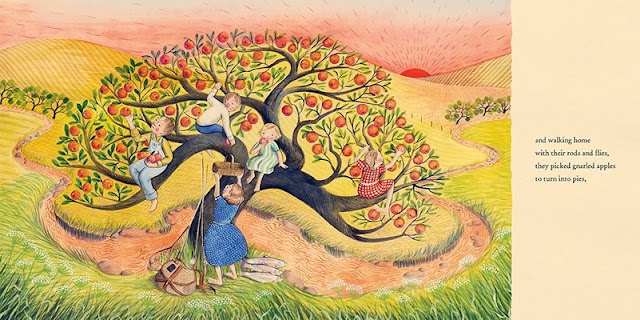I live in Australia but New Zealand is our neighbor and so I do take an interest in their books and awards. It is terrific that our Magpies Magazine includes reviews and articles about New Zealand books each issue.
I have talked about The Lighthouse Princess in a previous post. It has now won 'Best First Book' in the 2023 New Zealand Book Awards for Children and Young Adults. The Lighthouse Princess, was also selected as the winner in the 2021 Storylines Gavin Bishop Award for Illustration.
Other winners are:
Picture book award
Duck Goes Meow (Juliette MacIver, illus by Carla Martell, Scholastic NZ)
Blurb: Woof! says Dog. Moo! says Cow. Cluck! says Hen, and Duck Goes ... Meow.
A little yellow duckling is amongst animal friends who are all sure of the sounds they make: hiss, neigh, moo, cheep, cluck and oink. But when Duck goes ‘meow’, the other animals say no, that is wrong,
try again ... then Duck’s mama arrives, and boy, do they get a surprise!
Esther Glen award for junior fiction
Below (David Hill, Puffin)
Blurb: When Liam dares his classmate Imogen to come on a forbidden tour of the railway tunnel being drilled through a nearby mountain, he hopes she’ll quit protesting about it damaging the environment — his dad is an engineer working on the tunnel, after all. Just as they reach the huge tunnelling machine everything goes horribly wrong. When the rocks stop falling and the dust settles, they are trapped, kilometres below ground, in the dark. Water is trickling in and beginning to rise. And nobody knows where they are. Can they stop arguing and start working together to escape before time runs out?
Margaret Mahy Illustration Prize: Artists re-imagine The Witch in The Cherry Tree
Original book illustrated by Jenny Williams
To enter the prestigious prize, artists are given a Mahy book to interpret, and enter with a set of illustrations.
You probably already know, if you are a long-time reader of this blog, that I adore all books by the late New Zealand author and Hans Christian Andersen winner - Margaret Mahy. I love that there is a competition to bring back her picture books with new illustrations - not that the originals were not wonderful but of course so many are now out of print.
The Margaret Mahy Illustration Prize is one of New Zealand’s pre-eminent illustration prizes, offering a unique opportunity for an unpublished New Zealand-based illustrator to illustrate Margaret Mahy’s classic stories. It was launched in 2019 to celebrate and honour the 50th Anniversary of Mahy’s A Lion in the Meadow.
In the Witch in the Cherry Tree (1974), David and his mum are making small cakes and it is the smell of the baking that lures a witch into the cherry tree. A few cakes are burnt and these are useful to throw at the witch. David knows the witch is dangerous but he can also see she wants some cake. In the original version quite oddly this book has a recipe for gingerbread in the back - I wonder if they included a recipe in the new edition? You can see the art of several of the illustrators who submitted entries for this award.
Here is a part of an illustration by Jenny Williams and one from Jessica Twohill.
Here are a couple of text quotes:
"She perched there like a wicked black parrot and sniffed at the smell of baking."
"The witch pranced on the lawn with frenzy, fury and fiery wickedness."
Previous winners:
In my previous post I said "I wonder which book will feature for 2023 and beyond. If I could talk to the organisers of this illustration competition, I would loudly proclaim it should be The Pumpkin Man and the Very Crafty Creeper originally illustrated by Helen Craig. This story is such a joy to read aloud and it had sadly been out of print for too long!"
One more piece of New Zealand news. If you have not yet discovered Gecko Press take a few minutes to explore their website. I am very keen to see this new book for babies. It is in the form of a leporello.

Blurb: A concertina board book of big bright faces to place around baby on the floor at tummy time—by multi-award-winning author/illustrator Gavin Bishop. Babies will love tummy time or learning to sit up surrounded by this beautiful two metre fold-out, wordless board book illustrating faces and toys in bright colors. This safe and sturdy concertina book is a perfect new baby or baby shower gift, with compelling illustrations of the things babies love. Friendly faces from the whole family combine with familiar toys and objects, drawn in bold lines with a striking minimalist color palette. Choose your cover and which direction to read this fully reversible book. Accordion-fold books are perfect for babies to strengthen core muscles at tummy time with the saturated colours, simple lines and open faces that babies are hard-wired to enjoy. As the baby grows the strong simple images are perfect for introducing first words and concepts, with family faces to name—including the dog—and objects that babies love to hold and explore—soft toys, ball, keys, an enticing pair of spectacles and more.




















































